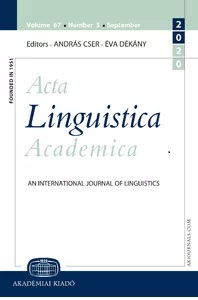A proof-of-concept meaning discrimination experiment to compile a word-in-context dataset for adjectives – A graph-based distributional approach
A proof-of-concept meaning discrimination experiment to compile a word-in-context dataset for adjectives – A graph-based distributional approach
Author(s): Eikő Héja, Noémi Ligeti-NagySubject(s): Morphology
Published by: Akadémiai Kiadó
Summary/Abstract: The Word-in-Context corpus, which forms part of the SuperGLUE benchmark dataset, focuses on a specific sense disambiguation task: it has to be decided whether two occurrences of a given target word in two different contexts convey the same meaning or not. Unfortunately, the WiC database exhibits a relatively low consistency in terms of inter-annotator agreement, which implies that the meaning discrimination task is not well defined even for humans. The present paper aims at tackling this problem through anchoring semantic information to observable surface data. For doing so, we have experimented with a graph-based distributional approach, where both sparse and dense adjectival vector representations served as input. According to our expectations the algorithm is able to anchor the semantic information to contextual data, and therefore it is able to provide clear and explicit criteria as to when the same meaning should be assigned to the occurrences. Moreover, since this method does not rely on any external knowledge base, it should be suitable for any low- or medium-resourced language
- Issue Year: 69/2022
- Issue No: 4
- Page Range: 521-548
- Page Count: 28
- Language: English

